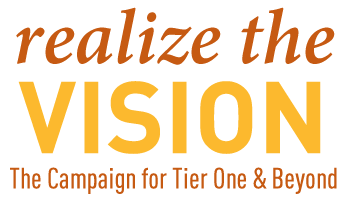“Why should you care about UT Dallas?”
President David E. Daniel put the question to about 100 of Dallas’ leading business and community advocates recently at an event hosted by Texas Instruments at the Federal Reserve Bank of Dallas.
Using examples of the once-prosperous cities such as Detroit, Dr. Daniel urged Texas to prepare for the future by building up its stock of national research universities and offered a summary of UT Dallas’ progress toward Tier One.
“Why should you care?” he said. “Or in the words of my teenaged son: ‘This affects me like how?’
“If you don’t care what the city looks like five years from now or aren’t concerned what this city might be like for your children or grandchildren or nieces and nephews, you can close your eyes and completely log out,” Daniel said. “But you’re here and that makes me think you do care.
“If we stop and think about what will be of value in the future, it’s human creative talent,” Daniel said. “If D-FW is to be a great city, we’ve got to have access to brilliant people.”
Highlights of President Daniel’s remarks:
- This year, enrollment soared past 20,000 students for the first time, totaling 21,170.
- The freshman SAT average score of 1261 ranks among the highest of Texas public universities.
- Among 2,233 freshmen, a record number of National Merit Scholars (89 scholars or 4 percent of our freshman class) were enrolled, which is the second highest percentage of any public university in America.
- U.S. News and World Report ranked UT Dallas the No. 3 public university in Texas. Nationally, it was tied with Arizona State and Oregon State.
- Private fundraising last year reached a record $65 million.
- Learn more about UT Dallas and Tier One here.
Among the 10 most economically productive cities in the nation, Dallas-Fort Worth is the only one without an Association of American Universities (AAU) member. These 62 research universities receive about 60 percent of all federally funded research, and their states and communities receive the economic boosts that come with it. AAU institutions generate hundreds of millions of dollars in annual research expenditures, attract venture capital, produce outstanding graduates and drive regional economic development.
This is what three trailblazers — Eugene McDermott, Cecil Green and Erik Jonsson — had in mind when they founded the research institution that became UT Dallas in 1969.
“These men had a dream,” said Greg Delagi, senior vice president and general manager of embedded processing at TI, and the evening’s host. “They wanted to create for this region the ‘MIT of the Southwest’ — a top tier university that would be an academic and research engine that would fuel the economy.”
The founders, who also created Texas Instruments, saw a glowing example in MIT. That institution's alumni have started more than 25,000 active companies, employing 3.3 million people and generating $2 trillion in revenue.
“We at TI still believe that we need an engine like this,” Delagi said. “An engine that will boost our economy long into the future. And we believe that UT Dallas can be that engine.”
Friends of UT Dallas have supported that vision by contributing close to $200 million during the University’s Realize the Vision: The Campaign for Tier One & Beyond. The five-year effort ends in December 2014. Support of faculty has increased dramatically, providing endowed positions to attract and retain highly qualified professors. During the campaign, the number of endowed chairs has increased from 35 to 64; professorships, from 15 to 32.
“A state as great as we are should have more than three Tier One universities,” said Richard Fisher, president and CEO of the Federal Reserve Bank of Dallas, who also spoke. Texas’ current AAU members are The University of Texas at Austin, Rice University and Texas A&M University. “Instead of importing brain power, let’s produce it here, capture it and keep it,” Fischer said.
